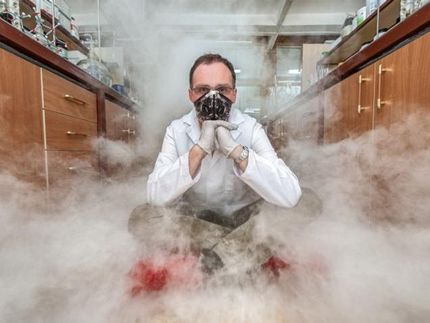How particulate matter arises from pollutant gases
International research project observes ultrafast particle growth through ammonia and nitric acid
Advertisement
When winter smog takes over Asian mega-cities, more particulate matter is measured in the streets than expected. An international team, including researchers from Goethe University Frankfurt, as well as the universities in Vienna and Innsbruck, has now discovered that nitric acid and ammonia in particular contribute to the formation of additional particulate matter. Nitric acid and ammonia arise in city centres predominantly from car exhaust. Experiments show that the high local concentration of the vapours in narrow and enclosed city streets accelerates the growth of tiny nanoparticles into stabile aerosol particles.

Symbolic image
Photo by Nick van den Berg on Unsplash
In crowded urban centres, high concentrations of particulate matter cause considerable health effects. Especially in winter months, the situation in many Asian mega-cities is dramatic when smog significantly reduces visibility and breathing becomes difficult.
Particulates, with a diameter of less than 2.5 micrometres, mostly form directly through combustion processes, for example in cars or heaters. These are called primary particulates. Particulates also form in the air as secondary particulates, when gases from organic substances, sulphuric acid, nitric acid or ammonia, condense on tiny nanoparticles. These grow into particles that make up a part of particulate matter.
Until now, how secondary particulates could be newly formed in the narrow streets of mega-cities was a puzzle. According to calculations, the tiny nanoparticles should accumulate on the abundantly available larger particles rather than forming new particulates.
Scientists in the international research project CLOUD have now recreated the conditions that prevail in the streets of mega-cities in a climate chamber at the particle accelerator CERN in Geneva, and reconstructed the formation of secondary particulates: in the narrow and enclosed streets of a city, a local increase of pollutants occurs. The cause of the irregular distribution of the pollutants is due in part to the high pollutant emissions at the street level. Furthermore, it takes a while before the street air mixes with the surrounding air. This leads to the two pollutants ammonia and nitric acid being temporarily concentrated in the street air. As the CLOUD experiments demonstrate, this high concentration creates conditions in which the two pollutants can condense onto nanoparticles: ammonium nitrate forms on condensation cores the size of only a few nanometres, causing these particles to grow rapidly.
“We have observed that these nanoparticles grow rapidly within just a few minutes. Some of them grow one hundred times more quickly than we had previously ever seen with other pollutants, such as sulphuric acid,” explains climate researcher Professor Joachim Curtius from Goethe University Frankfurt. “In crowded urban centres, the process we observed therefore makes an important contribution to the formation of particulate matter in winter smog – because this process only takes place at temperatures below about 5 degrees Celsius.” The aerosol physicist Paul Winkler from the University of Vienna adds: “When conditions are warmer, the particles are too volatile to contribute to growth.”
The formation of aerosol particles from ammonia and nitric acid probably takes place not only in cities and crowded areas, but on occasion also in higher atmospheric altitudes. Ammonia, which is primarily emitted from animal husbandry and other agriculture, arrives in the upper troposphere from air parcels rising from close to the ground by deep convection, and lightning creates nitric acid out of nitrogen in the air. “At the prevailing low temperatures there, new ammonium nitrate particles are formed which as condensation seeds play a role in cloud formation,” explains ion physicist Armin Hansel from the University of Innsbruck, pointing out the relevance of the research findings for climate.
The experiment CLOUD (Cosmics Leaving OUtdoor Droplets) at CERN studies how new aerosol particles are formed in the atmosphere out of precursor gases and continue to grow into condensation seeds. CLOUD thereby provides fundamental understanding on the formation of clouds and particulate matter. CLOUD is carried out by an international consortium consisting of 21 institutions. The CLOUD measuring chamber was developed with CERN know-how and achieves very precisely defined measuring conditions. CLOUD experiments use a variety of different measuring instruments to characterise the physical and chemical conditions of the atmosphere consisting of particles and gases. In the CLOUD project, the team led by Joachim Curtius from the Institute for Atmosphere and Environment at Goethe University Frankfurt develops and operates two mass spectrometers to detect trace gases such as ammonia and sulphuric acid even at the smallest concentrations as part of projects funded by the BMBF and the EU. At the Faculty of Physics at the University of Vienna, the team led by Paul Winkler is developing a new particle measuring device as part of an ERC project. The device will enable the quantitative investigation of aerosol dynamics specifically in the relevant size range of 1 to 10 nanometres. Armin Hansel from the Institute for Ion Physics and Applied Physics at the University of Innsbruck developed a new measuring procedure (PTR3-TOF-MS) to enable an even more sensitive analysis of trace gases in the CLOUD experiment with his research team as part of an FFG project.






























































